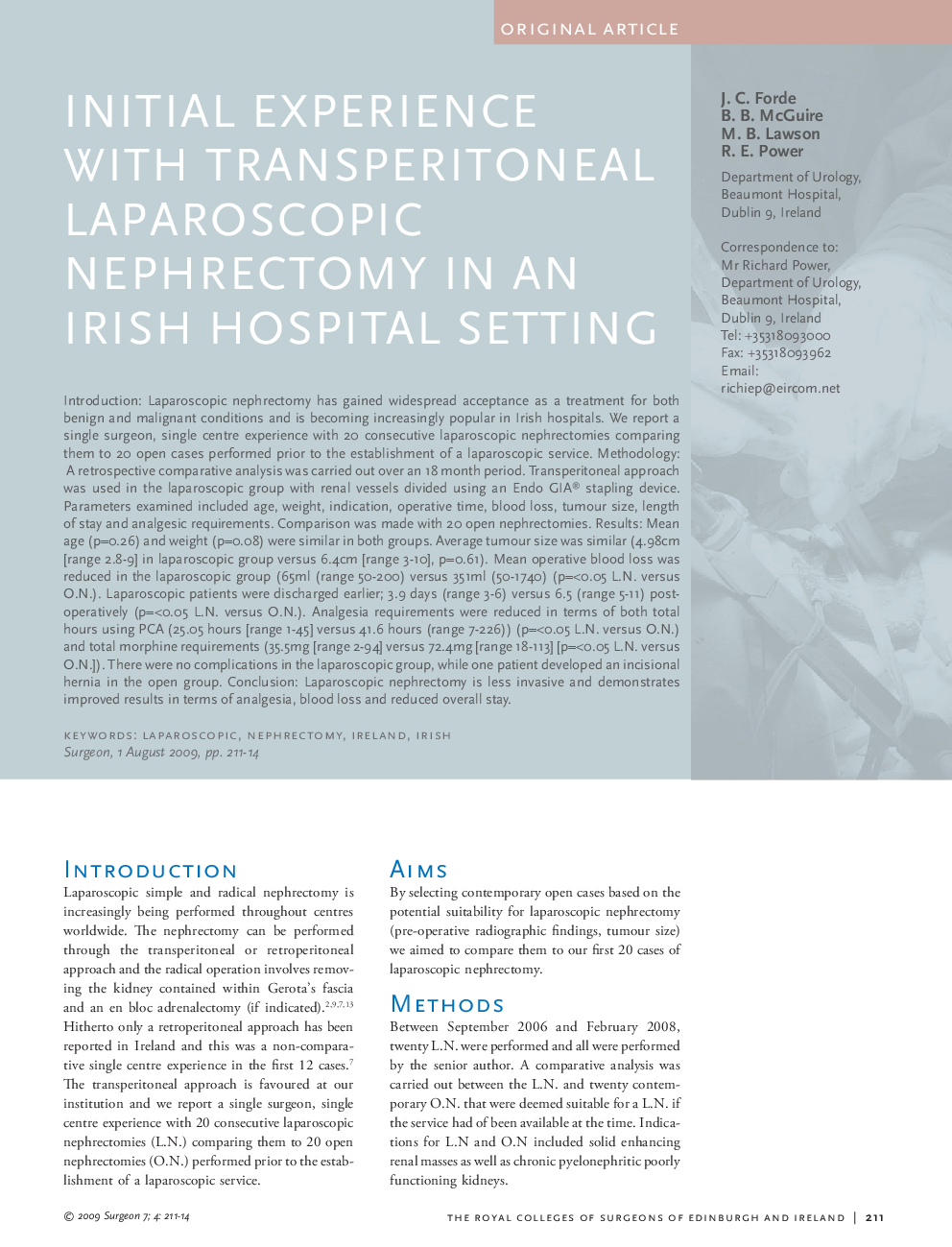| Article ID | Journal | Published Year | Pages | File Type |
|---|---|---|---|---|
| 3178900 | The Surgeon | 2009 | 4 Pages |
Introduction: Laparoscopic nephrectomy has gained widespread acceptance as a treatment for both benign and malignant conditions and is becoming increasingly popular in Irish hospitals. We report a single surgeon, single centre experience with 20 consecutive laparoscopic nephrectomies comparing them to 20 open cases performed prior to the establishment of a laparoscopic service. Methodology: A retrospective comparative analysis was carried out over an 18 month period. Transperitoneal approach was used in the laparoscopic group with renal vessels divided using an Endo GIA® stapling device. Parameters examined included age, weight, indication, operative time, blood loss, tumour size, length of stay and analgesic requirements. Comparison was made with 20 open nephrectomies. Results: Mean age (p=0.26) and weight (p=0.08) were similar in both groups. Average tumour size was similar (4.98cm [range 2.8–9] in laparoscopic group versus 6.4cm [range 3–10], p=0.61). Mean operative blood loss was reduced in the laparoscopic group (65ml (range 50–200) versus 351ml (50–1740) (p=<0.05 L.N. versus O.N.). Laparoscopic patients were discharged earlier; 3.9 days (range 3–6) versus 6.5 (range 5–11) postoperatively (p=<0.05 L.N. versus O.N.). Analgesia requirements were reduced in terms of both total hours using PCA (25.05 hours [range 1–45] versus 41.6 hours (range 7–226)) (p=<0.05 L.N. versus O.N.) and total morphine requirements (35.5mg [range 2–94] versus 72.4mg [range 18-113] [p=<0.05 L.N. versus O.N.]). There were no complications in the laparoscopic group, while one patient developed an incisional hernia in the open group. Conclusion: Laparoscopic nephrectomy is less invasive and demonstrates improved results in terms of analgesia, blood loss and reduced overall stay.
